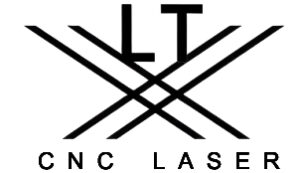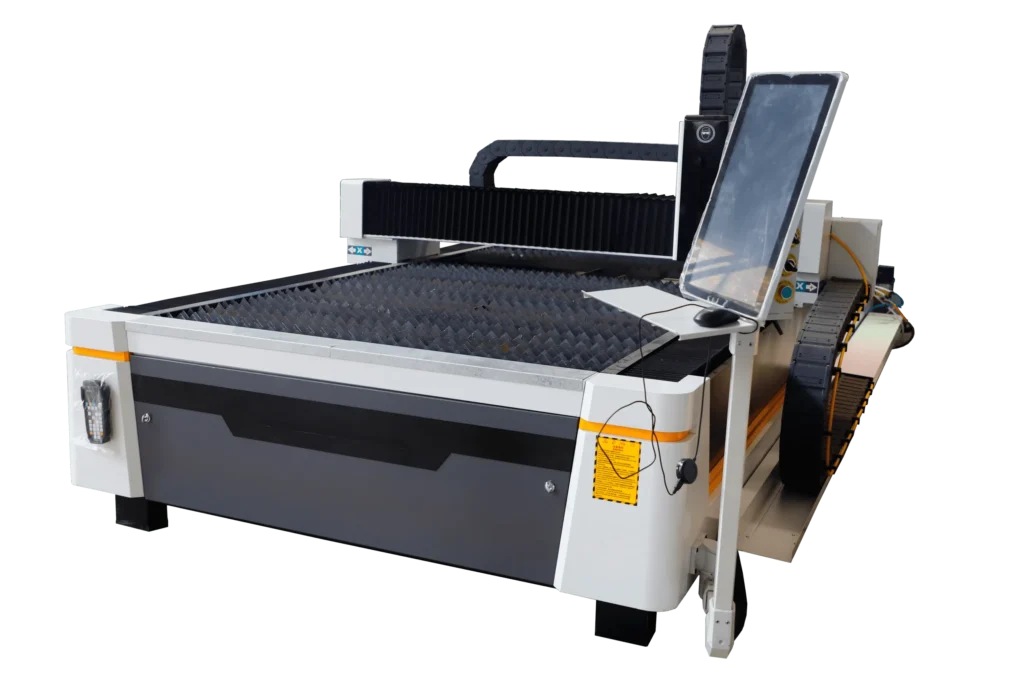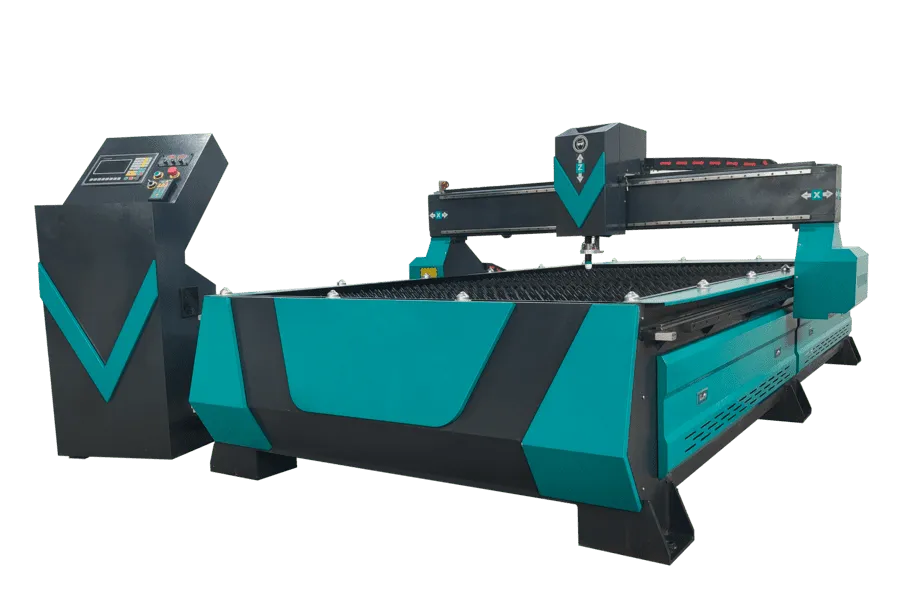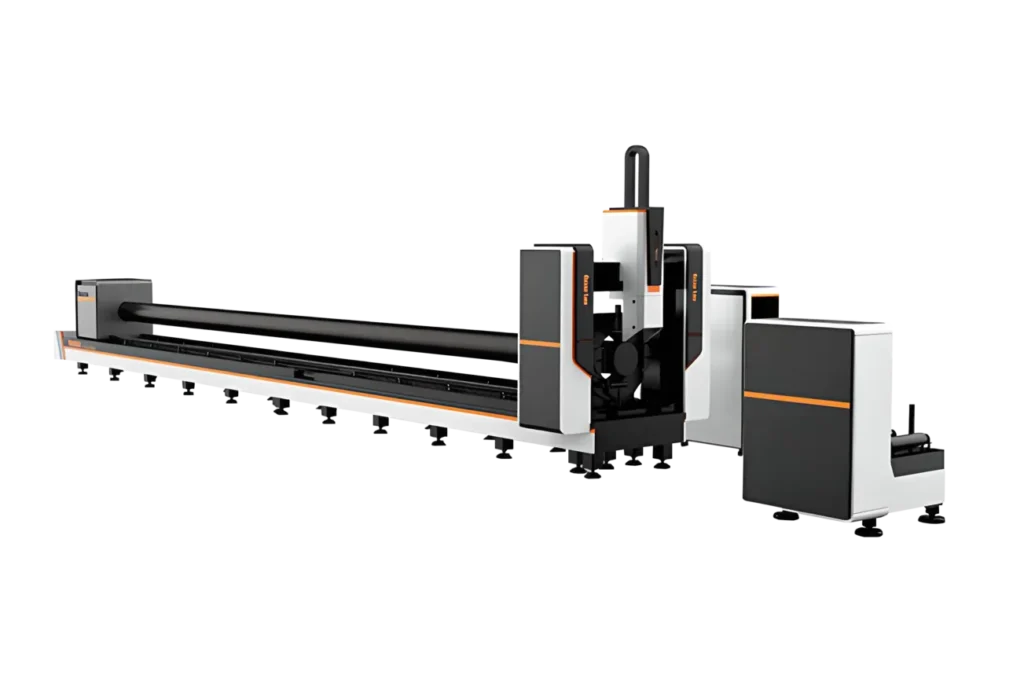Choosing the right CNC plasma cutter is crucial to ensure it meets your cutting requirements and provides good value. This decision should be based on several factors including the plasma power source, the machine’s size/model, whether you need to cut tubes or only flat plates, and the reliability of the supplier. Below, we break down these considerations and provide guidance on selecting the most suitable CNC plasma cutting machine for your needs.

CNC Plasma Cutting
Selecting the Proper Plasma Power Source
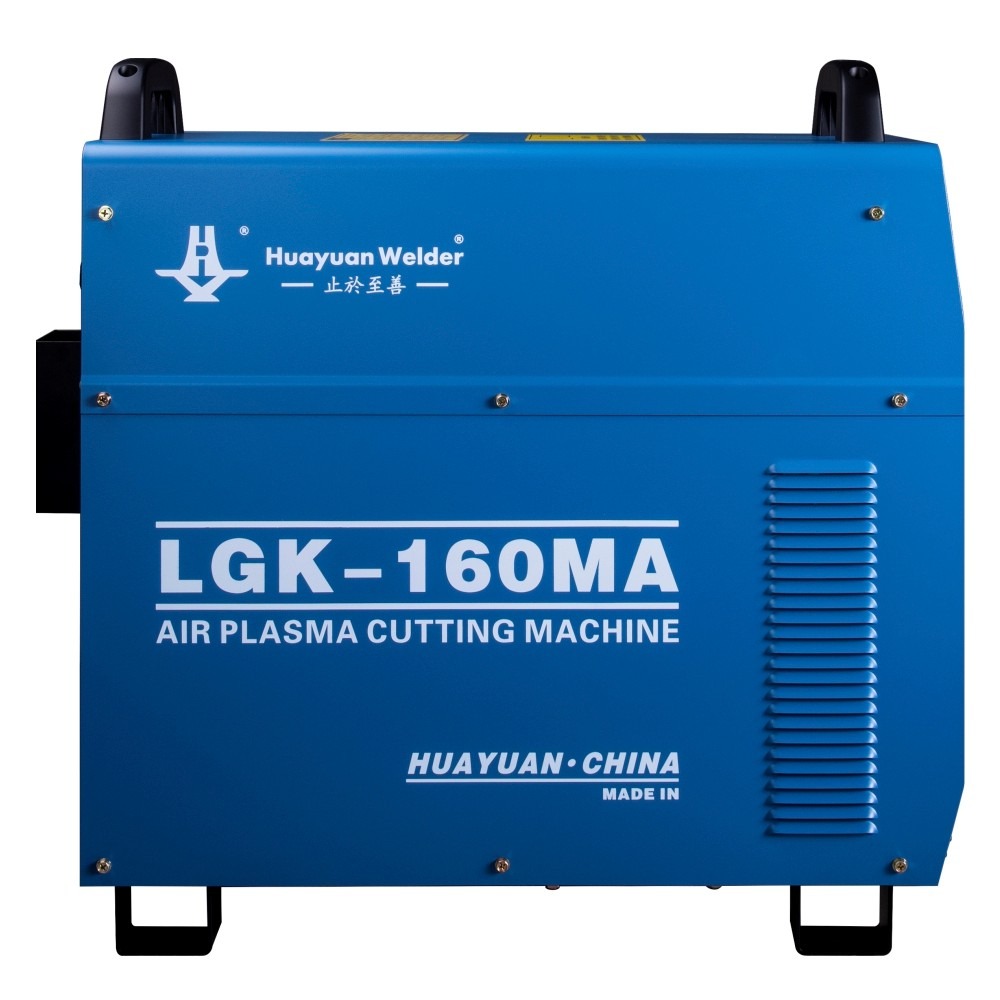
Plasma Power Supply
Match Power to Material Thickness: The plasma power supply determines how thick a material you can cut and the cut quality. One of the first factors to consider is the thickness of the metal you will cut most often, since plasma cutters are generally rated by their cutting thickness capacity ( 1 ). For example, if you mainly cut thin sheet metal, a lower-current plasma (e.g. 60–100A) may suffice; cutting thick plate (e.g. 20mm or more) will require a higher amperage source (200A, 300A, etc.). Always choose a plasma power source with a capacity slightly above your maximum thickness so that it can perform quality cuts rather than just barely sever the metal.
Domestic vs. Imported Plasma Sources: In the market, you will encounter both domestic (Chinese) and imported plasma power supplies. Domestic Chinese plasma sources (often the LGK series from manufacturers like Huayuan) are popular for their affordable price and stable performance for general cutting needs. For instance, a Chinese LGK-120 (120A) inverter plasma can typically sever cut carbon steel up to ~45 mm thick, with a “perfect” (clean, high-quality) cut around 25 mm ( 2 ). These units offer good value and are suitable if extreme precision is not required.
On the other hand, imported plasma systems — the most renowned are from Hypertherm (USA) — come at a higher price but deliver superior cut quality, precision, and longevity. Hypertherm plasma sources of similar amperage often achieve slightly greater thickness and cleaner cuts. For example, a Hypertherm Powermax125 (125A) can sever cut carbon steel about 57 mm (with a high-quality cut around 30 mm) ( 4 ), outperforming a comparable Chinese source on cut finesse. Moreover, Hypertherm’s high-definition plasma systems maintain a narrower kerf and squarer edges, which is beneficial for precision fabrication.
Precision Cutting and Small Hole Capability: If your application demands high precision on thick plate (for example, cutting small bolt holes through thick steel), the type of plasma source becomes even more critical. Standard air plasma systems tend to produce a noticeable taper on thick cuts, which means very small holes can be out-of-round or heavily beveled. A rule of thumb for conventional plasma is that the minimum hole diameter for good quality should be around 1.5 times the plate thickness—attempting a 1:1 ratio (hole diameter equal to thickness) often results in a poor-quality hole due to taper and dross. Achieving a true 1:1 ratio without secondary drilling requires a high-precision plasma power supply (often called “fine plasma” or “high-definition plasma”) along with the right cutting technology ( 5 ). High-definition imported plasmas excel here: Hypertherm’s systems, for instance, incorporate features like True Hole® technology which can produce bolt-ready round holes with diameter equal to the plate thickness (1:1 ratio) on carbon steel ( 6 ). This is something general air plasmas cannot do consistently. Therefore, if you need to cut thick plate with precision (like flange holes or precision profiles), investing in a premium plasma source (e.g. Hypertherm X-Definition series) is justified—even though the cost is higher, it ensures clean, accurate cuts that might otherwise require machining to achieve ( 7 ).
In summary, choose the plasma power source based on your thickness and quality requirements:
opt for a reliable domestic source for standard cutting of common thicknesses to save cost, but consider
an imported high-definition plasma if you require superior cut quality, minimal slag, and precision
(especially on thick materials or small features).
Comparison – Chinese vs. American Plasma Sources: To illustrate the differences, here is a brief comparison: A Chinese LGK-200 (200A) can “perfect cut” mild steel up to ~35 mm [8] , whereas an American Hypertherm Powermax105 (105A) achieves a quality cut around 22 mm on mild steel [9] (the Hypertherm has lower amperage but uses advanced technology to cut very cleanly at that thickness). At higher power, an LGK-300HD can clean-cut ~50 mm carbon steel [8] , while Hypertherm’ s high-definition XPR300 system (300A) clean-cuts about 50 mm as well [3] but with significantly better edge quality and hole precision (due to the refined arc and gas control). Keep in mind the price difference: domestic plasma units are much cheaper, whereas Hypertherm and similar premium sources are expensive upfront – but they may save costs in the long run by reducing rework and consumable usage. Consider your budget alongside the required cut quality when making this choice.
Choosing the CNC Plasma Cutter Model and Size
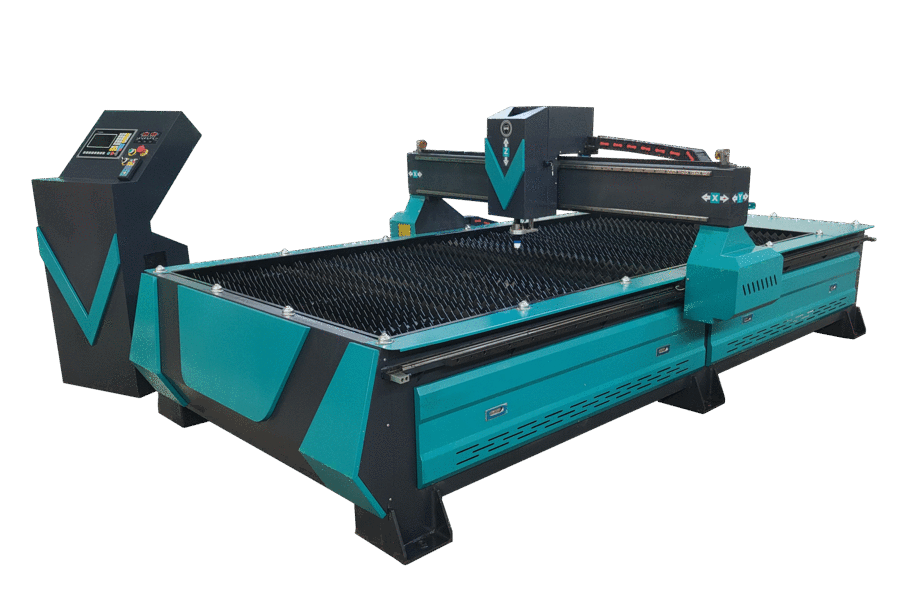
CNC Plasma Cutting Machine
CNC plasma cutting machines come in various models and frame designs, generally distinguished by their working table size and construction style. It’ s important to select a machine format that fits your material size and production volume.
Table-Type vs. Gantry-Type Machines: For sheet metal and medium-thickness plate cutting, the most common formats are the table-type CNC plasma cutters. These have a fixed cutting table (bed) where sheets are placed, and they typically come in standard sizes denoted by numbers like 3015, 4015, 6015, etc. The numbers correspond to the effective cutting area dimensions in millimeters (i.e. 3015 means ~3000 × 1500 mm working area, which can fit a standard 5’×10’ sheet) [10] . Table models like 2513, 3015, 4015 or 4020 are generally compact and suitable for cutting smaller to mid-sized plates (up to roughly 1.5 or 2 meters width). They are popular for fabrication shops that mainly cut sheet metal, as they provide a stable, self-contained platform and are relatively space-saving.
For larger plates and heavy industrial applications, gantry-style CNC plasma cutters are used. A gantry plasma cutter has rails on the floor and a bridge (gantry) that spans the cutting width, moving over a separate cutting table or plate support area. These machines can be built much larger than table-types. Standard gantry models might have effective cutting widths of 3–4 m and lengths of 6–8 m, but they are often custom-built to size [11] [12] . In fact, a major advantage of gantry systems is that width and length can be expanded as needed – some heavy-duty gantry CNC plasmas are made with over 10 m of cutting width, and the length is essentially unlimited by adding rail sections [12] . This makes them ideal for large steel service centers, shipyards, or construction machinery factories where very large steel plates must be cut. Keep in mind that with increasing size, the machine’ s cost, footprint, and complexity (dual drives, more powerful motors, etc.) also increase. But if your workflow involves large-format plates or long continuous sheets, a gantry CNC plasma is the appropriate choice.
When choosing the model, consider the maximum plate size you will cut. You should select a model that can handle slightly larger than your standard plate to allow some margin. For example, if you frequently cut 1.5 m wide sheets, a 1.5 m width machine (like 3015) works, but if occasional 2 m width plates come in, you might jump to a 4020 (4 m by 2 m) size. Also factor in whether you need to load multiple plates: larger gantry systems can sometimes be configured with shuttle tables or simply have more bed area to stage plates. As a tip, both plate size and thickness influence the model: bigger, heavier plates may require a sturdier machine that can mount a higher-power plasma torch or even multiple torches [1] . Thus, discuss with the manufacturer about the machine’s frame strength and drive system if you plan on cutting very thick material on a wide table (for thick plate, features like dual-side drive, stronger motors, and height control become important to maintain accuracy).
In summary, select a table-type CNC plasma for small to medium plates and lighter fabrication, and choose a gantry-type CNC plasma for large plates or high-production environments. Common table models (e.g. 3015, 4015) are cost-effective and easy to install, while custom gantry systems provide the scalability for oversized workpieces. Always verify the machine’s effective cutting area and ensure it slightly exceeds your largest plate size. Also ensure the machine can accommodate the plasma power you intend to use (some smaller tables cannot physically mount very large plasma torches or might lack the power supply capacity for them).
Considering a CNC Tube Plasma Cutter (for Pipe Cutting)

CNC Plasma Tube Cutting Machine
If your needs go beyond flat plates and include cutting round or square tubes and pipes, a CNC tube plasma cutter is an excellent, cost-effective solution. Rather than cutting pipes manually or using mechanical methods, a CNC plasma tube cutter automates the process of profiling pipes with speed and precision. This type of machine is specifically designed to cut along the length of pipes, create holes or saddle cuts, and even perform bevel cutting for weld preparation on pipe ends.
Dedicated Tube Plasma Cutters: A tube/pipe plasma cutting machine typically consists of a rotating chuck and tallstock that hold and turn the pipe, while the plasma torch moves around or along it to cut the desired shapes. These machines can handle various profiles – not just round pipe, but often square and rectangular tubes, i-beams, or other profiles, depending on the machine configuration. They are characterized by the maximum pipe diameter and length they can handle. For example, there are compact tube plasma cutters aimed at smaller pipes (say up to 200–300 mm diameter), and there are heavy-duty large diameter plasma pipe cutters for industries like oil & gas or construction. Some advanced plasma pipe cutters come with multi-axis capability (e.g. 6-axis or 8-axis control) which allows the torch to tilt and make bevel cuts or complex angle cuts on the pipe as it rotates, enabling fabrication of precise pipe joints and intersections.
If you only have occasional pipe cutting needs, you might not need a separate machine – some plate plasma machines can be equipped with a tube cutting attachment. For instance, certain CNC plasma tables (like the combination plate-and-tube cutters) have an optional rotary chuck on the side of the bed. This allows one machine to cut flat sheets as well as sections of pipe or tube. Such combo systems usually support moderate tube sizes. For example, one combination machine model provides a three-jaw chuck that can handle round tubes of about 220 mm, 320 mm, or up to 420 mm in diameter (and up to 6 m length) with the appropriate attachments [13] . This is a very versatile setup for shops that need both capabilities without investing in two separate CNC systems.
However, if pipe cutting is a significant part of your work (for instance, cutting a lot of structural pipes, pipelines, or cylindrical steel parts), a dedicated CNC tube plasma cutter is recommended. These machines are optimized for pipe work – they securely support long pipes and keep them steady for accurate cutting. Many such machines in China are available at a fraction of the cost of an equivalent tube laser cutter, making them highly cost-effective for cutting pipes. They can cut end profiles (for T-joints, saddles), holes in pipe walls, miters, and even do branch cutouts with proper programming. In terms of capability, standard tube plasma cutters can cover a wide range of pipe sizes. For instance, you can find machines that handle pipe diameters from as small as ~50 mm up to 300 mm or more. Heavy-duty plasma pipe cutters exist for very large diameters – some models can cut pipes from around 630 mm up to 1600–2000 mm in diameter, with lengths of 6–12 meters or even longer [14] . This means even large industrial pipes can be profiled with plasma cutting (often these big machines use a combination of plasma for thinner walls and oxy-fuel torches for very thick pipe walls).
When choosing a tube plasma cutter, consider the maximum tube diameter and length you will need, and whether you require bevel cutting (if you plan on preparing weld bevels, ensure the machine has bevel-cutting head or support for multi-axis). Also consider chuck style – some machines use self-centering chucks, others use roller-bed systems for ultra-large pipes. The plasma power source for a tube cutter should be chosen based on the pipe wall thickness (often the same power supply can be used as for flat cutting). Fortunately, cutting pipes usually requires less power than cutting the equivalent plate (since you typically aren’t cutting through as wide an area at once), but if you need to cut thick-walled pipe, be sure the plasma amperage is sufficient for the wall thickness.
Overall, a CNC tube plasma cutter offers an economical way to automate pipe fabrication, dramatically increasing productivity for making frames, trusses, piping systems, etc. It is a great alternative to expensive tube laser cutters when ultra-high precision is not needed, and it significantly outperforms manual cutting in both speed and consistency. If your operation frequently involves tube cutting, investing in a plasma tube cutter or a hybrid machine will pay off in efficiency.
Choosing a Reliable Supplier and Getting the Right Solution
Finally, once you have a clear idea of the type of CNC plasma cutter you need (in terms of power source, model size, and any tube-cutting capability), it’s crucial to choose the right manufacturer or supplier for the machine. The CNC plasma cutter market is mature in China, and there are many factories and suppliers offering these machines. Prices and quality can vary widely, so you’ll want to evaluate suppliers on their reputation, experience, and the support they provide.
Look for a supplier who can act as a professional consultant, not just a seller. A good supplier will listen to your specific cutting requirements (material type and thickness, part precision, production volume, workspace size, budget, etc.) and then recommend or even customize a machine that fits those needs. This kind of tailored solution ensures you are not over-paying for capacity you don’t use, and also that you’re not under-powered for the jobs you have.
Experience matters: companies with long experience in CNC cutting equipment are often more knowledgeable in advising the right setup and their machines tend to be more refined. For example, Light CNC Laser is one such supplier with over 10 years of experience in the industry. Suppliers like this focus on providing cost-effective cutting equipment without compromising on quality or service. In the case of Light CNC Laser, they pride themselves on using service and quality as a foundation of their business, aiming to build trust over the long term. They even state a vision of building a brand over 30 years to become the most trusted Chinese supplier, and to support each customer with at least 30 years of service life on the machines provided.
When evaluating suppliers, consider the following points:
-
Technical Support and Training: Will the supplier provide installation, training, and after-sales support? CNC plasma cutters require setup and calibration; having the manufacturer’s support (either on-site or remote) is extremely valuable, especially if you are new to CNC equipment. Check if they offer free lifetime technical support or a warranty period for parts – for instance, a common offering might be 1-year full machine warranty and long-term support thereafter [15] .
-
References and Projects: Don’t hesitate to ask for case studies or references. If a supplier has installed machines for customers in similar industries or overseas, it’s a good sign. You may even request to see a machine in operation (either via video or a visit if possible) to judge the build quality and cutting performance firsthand.
-
Customization Ability: If you have unique needs (say a special size machine or a combo plate-and-pipe system), assess whether the supplier has the engineering capability to customize. Larger or more experienced firms in China often can customize table sizes, add extra features like drilling heads, marking tools, or specialized fixtures. This could be a deciding factor if your application isn’t standard.
-
Value for Money: Finally, compare the overall value. Sometimes a very low-priced machine might lack important features or durability. It’s often worth paying a bit more for a machine with a stable control system, reliable torch height control (THC), and a robust frame – these features ensure the machine will cut accurately and last longer. The goal is to find a machine that meets your requirements at a competitive price, with a trustworthy company standing behind it.
In conclusion, choosing a CNC plasma cutter involves balancing your technical needs with budget and quality. By considering the power source (domestic vs. imported plasma generator) appropriate for your material thickness and quality demands, selecting a machine model that fits your plate or pipe dimensions, and partnering with a capable supplier, you can obtain a cutting solution that will serve your business for many years. With the rapid development of CNC plasma cutting technology in recent years – from more efficient plasma power supplies to improved CNC controls – there are plenty of options available. Evaluating these options carefully with the above points in mind will help you make an informed decision on how to choose the right CNC plasma cutter for your needs.
Sources:
- 1, 16: 5 Tips for Choosing a CNC Plasma Cutter — Central Welding Supply
https://www.centralwelding.com/blogs/5-tips-for-choosing-a-cnc-plasma-cutter - 2, 3, 4, 8, 9, 10, 13, 15: Multi-Function CNC Plasma Square Tube Cutter | Plate and Tube Cutting Machine
https://lightcnclaser.com/multi-function-cnc-plasma-square-tube-cutter-plate-and-tube-cutting-machine/ - 5: 等离子切割技巧,掌握这一点很重要_小孔_加工_软件
https://www.sohu.com/a/666137775_121124515 - 6, 7: XPR300 可以行之有效地取代光纤激光。
https://www.hypertherm.com/zh/resources/more-resources/articles/plasma-viable-alternative-to-laser/ - 11, 12: CNC Gantry Plasma Cutting Machine | CNC Plasma Cutting Machine | YOMI CNC Cutting&Welding Machinery
https://www.steelstructurer.com/pid18378048/CNC-Gantry-Plasma-Cutting-Machine.htm - 14: Roller Type Pipe CNC Plasma Cutting Machine | Large Diameter Pipe Cutting Machine | YOMI CNC Cutting&Welding Machinery
https://www.steelstructurer.com/pid18382024/Roller-Type-Pipe-CNC-Plasma-Cutting-Machine.htm
